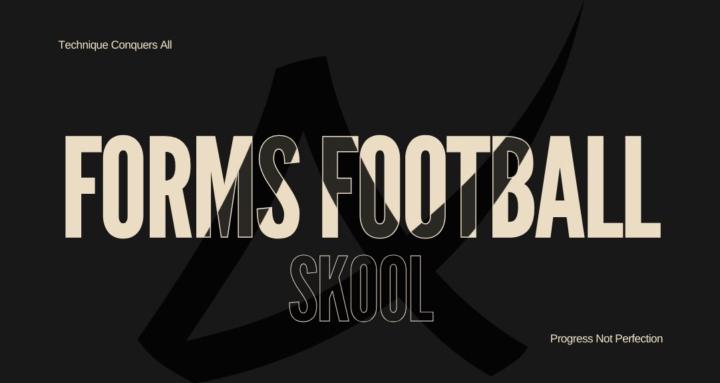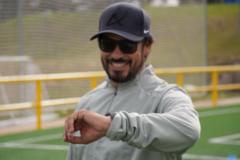Sep 8 • Forms Academy Insights
Training for Transfer, Not Just Technique
Most soccer training "looks good" on the surface: clean drills, sharp touches, polished players. The problem is, none of that matters if the skill does not show up in the game.
At Forms Academy, we do not train just for technique. We train for transfer.
Transfer means the ability to take what you learn in practice and apply it when the game gets chaotic, when legs are tired, when defenders close space in half a second, when your next decision decides whether your team keeps the ball or loses it.
Many players look great in drills but struggle when it matters most. Why? Because their brains only wired the skill for rehearsal, not for competition.
The Neuroscience of Transfer
The human brain does not store skills as "muscle memory." Muscles cannot remember anything. Skills are stored as neural circuits, networks of connections built through repetition, variation, and reinforcement.
When a player practices a skill only in one setting, passing cleanly through cones in an empty field, for example, the brain encodes the movement as context-dependent. It works only in that exact situation. As soon as the environment changes, the neural pattern does not fire correctly.
This is why a player can complete a hundred perfect passes in a drill but misplace one under pressure in a match. The brain did not build a flexible pattern. It built a fragile one.
The solution is variability. Research in motor learning shows that when conditions shift (smaller space, more speed, added defenders), the brain is forced to generalize the skill. Instead of memorizing one narrow version, it creates a broader, more adaptable program. That program is what survives in real competition.
Resistance Training for the Brain
Parents sometimes see our training sessions and wonder why they do not look "clean." Passes go astray. Touches break down. Players look frustrated.
That is not failure. That is the point.
The nervous system works like the muscular system. Muscles only grow when stressed by resistance. Neural circuits only grow when stressed by variability and pressure. If training is always neat, the brain never struggles, and without struggle, there is no growth.
At Forms Academy, we engineer struggle. We deliberately shrink fields, crowd space, and overload decisions. It looks messy in the moment, but over time, those circuits become stronger and more automatic. That is how a player learns to stay composed when everyone else falls apart.
Why "Extra Touches" Can Backfire
Parents naturally want to help their children, so it is common to think, "If I just get them extra touches, they will improve faster." On the surface, it sounds right. More reps should equal more progress. But the reality is more complicated.
Not all touches are created equal.
If those touches come in isolated, repetitive drills, the brain wires the skill only for that drill. It is like a basketball player who shoots hundreds of free throws in silence, then misses in the middle of a loud gym. The reps trained accuracy, but not transfer.
Even worse, random extra sessions can interfere with the learning sequence. At Forms, every drill is placed intentionally: when to introduce rhythm, when to load precision, when to add chaos. Extra touches outside of that plan can pull players off-track, splitting the brain's focus between two competing systems. Instead of reinforcing the deep learning already underway, the player ends up stalled, or worse, rewiring fragile habits.
Think of it like weightlifting with bad form. More reps do not make you stronger. They just make the bad pattern harder to unlearn.
This is why we tell parents: it is not about the raw number of touches. It is about the right touches, at the right time, in the right environment.
The Forms Methodology: Built for Transfer
At Forms Academy, we structure training with three guiding principles:
- Precision First- Players begin by building accuracy, rhythm, and controlled execution. This establishes clean neural foundations.
- Variability Next - Once the skill is stable, we introduce changes, different spaces, time constraints, and defenders. This forces the brain to adapt and generalize.
- Chaos Last - Only after stability is proven do we load high-speed, high-pressure, game-like scenarios. At this stage, players learn to thrive in the very conditions that break others down.
This is why our sessions may not look as polished as traditional drills. But the outcome speaks for itself: players who can execute under fatigue, adapt when the unexpected happens, and remain calm under pressure.
What This Means for Parents
Parents often measure progress by what they see in practice: sharp touches, smooth drills, fewer mistakes. But real development does not always look polished. It often looks messy. Mistakes are not signs of failure, but of growth.
The critical question is not "Did my child look good in training?" but "Will these skills hold up in the 80th minute of a match?"
At Forms Academy, we do not measure success by how pretty the drill looks. We measure it by whether the skill transfers into the game.
The Result
The end result is simple but rare: a player who matters when it counts. Not just clean in warm-ups. Not just sharp on highlight reels. But reliable under fatigue, adaptive in unpredictable moments, and composed when everyone else is breaking down.
That is the difference between training for technique and training for transfer.
And that is why our players are not just practicing soccer. They are building skills that last, skills that transfer, and skills that win games.
3:24
4
2 comments
powered by

skool.com/forms-football-skool-9380
The official community of Forms Academy. Where parents & coaches learn the science, systems, & philosophy that raise elite youth footballers (soccer).
Suggested communities
Powered by
